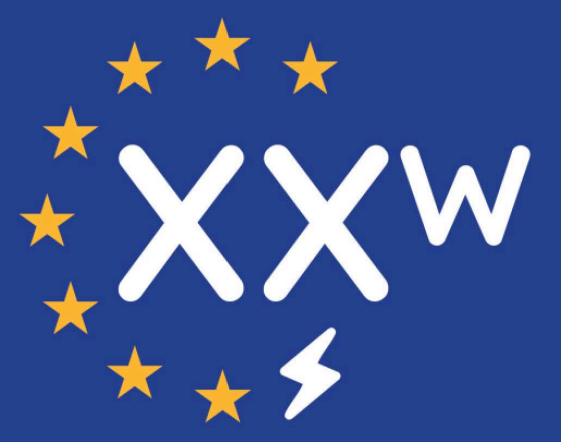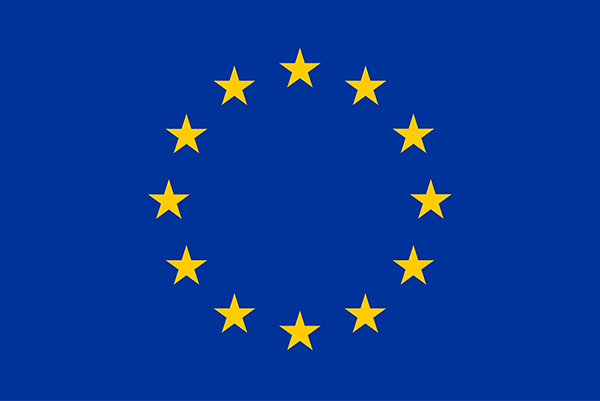- Industry
- Region
- Country / Region
On December 11, 2025, the European Commission issued Commission Implementation Decision (EU) 2025/2499, which revises the harmonized standards for short-range devices (SRDs) and airborne mobile communication systems.
The main changes are as follows:
- Removal of the old version of the standard: EN 300 220-2 V3.1.1 for short-range devices (SRDs) in the frequency band from 25 MHz to 1 000 MHz, EN 302 480 V2.2.1 for airborne mobile communication systems (MCOBA) and EN 302 729 V2.1.1 for short-range devices using ultra-wideband (UWB) technology. The effective date of standard deletion is June 11, 2027;
- The following harmonized standards have been added: EN 300 220-2 V3.3.1, EN 302 480 V3.1.1, EN 302 729-1 V3.1.1, EN 303 659 V1.1.1 short-range devices in data networks, EN 305 550-6 V1.2.1 specific wireless measurement equipment (e.g. detection radar) in the frequency band from 40 GHz to 260 GHz.
Click on this link to view the original text of (EU) 2025/2499.
On December 10, 2025, the European Commission launched a public consultation to discuss an initiative aimed at repealing the RED Cybersecurity Delegated Regulation (EU) 2022/30. The initiative aims to repeal (EU) 2022/30 after the Cyber Resilience Act (CRA) goes into effect on December 11, 2027. This is intended to avoid overlap and ambiguity between the basic cybersecurity-related requirements of the Radio Equipment Directive and those in the Cyber Resilience Act.
Click this link to view the original public consultation, and the comment period is until January 7, 2026.
On November 24, 2025, the European Commission officially promulgated the new Energy Efficiency Regulation (EU) 2025/2052 for external power supplies. The regulation sets out eco-design requirements in accordance with EU Directive 2009/125/EC and aims to significantly improve the environmental performance of energy-related products and promote Europe's transition to resource conservation and circular economy. The new regulation repeales the original Regulation (EU) 2019/1782. The new regulations not only cover external power supplies (EPS), but also include wireless chargers, wireless charging pads, universal portable battery chargers, and USB Type-C cables in the scope of ecological design controls. The new regulations have a three-year transition period, and most of the requirements will be mandatory from December 14, 2028.
Main requirements:
- USB Type-C becomes a universal interface. Unless eligible for an exemption, the AC-DC external power supply must be designed as an "interoperable EPS" and equipped with at least one USB Type-C or USB PD port (i.e., a USB Type-C interface that supports the USB PD fast charging protocol). To prevent premature device scrapping due to cable damage, interoperable EPS must support standard USB Type-C cables that can be plugged in and out and must not use fixed connection output cables;
- Universal portable battery chargers with a rated input power of up to 100W, as well as non-exempt wireless chargers and wireless charging pads, must also be equipped with a USB Type-C port at the DC input and powered via an interoperable EPS;
- Stricter energy efficiency and labeling requirements: set maximum power consumption limits for different types of EPS, such as the no-load power consumption of a single-voltage AC-DC EPS should not exceed 0.075W; introduce low load efficiency (10% load) and average active efficiency requirements (based on minimum performance at 25%, 50%, 75% and 100% load); The standby power consumption of wireless charging pads is also clearly regulated, such as wireless charging boards with non-hardened DC cables, whose DC input power consumption must not be higher than 0.5W;
- In terms of identification, interoperable EPS must be labeled as "universal charger" and clearly marked with the maximum rated output power. At the same time, USB Type-C cables must also indicate the maximum supported power on the plug, such as "60W" or "240W". An example of the "Universal Charger" logo is as follows:

Click on this link to view the original (EU) 2025/2052 regulation.
Following some German companies have called on the EU to fully open up the 6GHz band for Wi-FiOn November 12, 2025, the 68th meeting of the Radio Spectrum Policy Group (RSPG), an advisory body of the European Commission, was held in Brussels, and the draft resolution of the meeting allocated 540MHz in the 6GHz band to be allocated to mobile communication operators, making mobile operators dominate the allocation of the 6GHz band. The remaining 160MHz will be temporarily frozen until a final decision is made at the International Telecommunication Union (ITU) World Radiocommunication Conference (WRC-27) in 2027.
Click this link to view the original Reuters report.
On November 12, 2025, the European Commission launched a public consultation on the new legislative framework (NLF), which aims to update the rules on conformity assessment bodies. The main body of the public consultation is a questionnaire containing information on the compliance of digital products (including the tendency of display formats such as QR codes, barcodes, NFC/RFID and other contactless technologies), digital product passports (DPPs), the regulation of refurbished products, etc.
Click this link to view the original public consultation, the deadline for comments is February 4, 2026.
Some German telecommunications and infrastructure providers sent an open letter to German Federal Digital Minister Carsten Wildberg, urging Germany to take a clear position on the future use of the 6GHz high frequency band (6425-7125 MHz). The goal of the companies involved is to support the full opening of the band for license-free Wi-Fi throughout the EU. Signatories include Deutsche Glasfaser, EWE TEL, HPE, Fritz (AVM), Lancom Systems and NetCologne.
The next plenary meeting of the Radio Spectrum Policy Group (RSPG), the European Commission's high-level advisory body, will be held on November 12, 2025. A proposal for the use of the 6GHz band is expected to be discussed at that time. Based on this proposal, the European Commission may initiate a coordination process at EU level.
Click on view relevant media coverage.
On August 21, 2025, the European Commission's Directorate-General for Trade and Economic Security issued a statement announcing that the United States and the European Union have reached an agreement on a reciprocal, fair and balanced trade framework agreement (hereinafter referred to as the "Framework Agreement").
Article 13 of the Framework Agreement states that the EU reaffirms that a US conformity assessment body may be designated as a notified body under the Annex to the Telecommunications Equipment Industry of the European Community-United States Mutual Recognition Agreement (1998). These Notified Bodies will be able to carry out the basic requirements tasks outlined in the Radio Equipment Directive 2014/53/EU, including cybersecurity. The United States and the European Union will negotiate a mutual recognition agreement on cybersecurity. As of October 31, 2025, there are already four U.S. certification bodies on the EU NANDO website that have been listed as notified bodies in the EU cybersecurity category.
Click this link to view the original statement of the European Commission's Directorate-General for Trade and Economic Security.
On August 14, 2025, the European Commission issued an executive decision numbered (EU) 2025/1741 in the oOfficial Journal, updating the harmonized standards for some radio equipment directives (RED). Some of the updates are as follows:
- The 1.5 GHz satellite ground station standard EN 300 487 V2.2.1 replaces EN 300 487 V2.1.2;
- The LTE base station standard EN 301 908-14 V17.1.1 replaces EN 301 908-14 V15.1.1;
- The multi-mode base station standard EN 301 908-18 V17.1.1 replaces EN 301 908-18 V15.1.1;
- The UWB standard EN 302 065-3-1 V3.2.1 for in-vehicle access systems replaces EN 302 065-3 V2.2.1;
- The UWB standard EN 302 065-4-1 V3.2.1 for material sensing devices replaces EN 302 065-4 V1.1.1;
- The EMC standard EN 301 489-28 V2.1.1 for wireless digital video link equipment has been added.
Click on the link to view the original (EU) 2025/1741 implementation decision.
On June 27, 2025, the Electronic Communications Committee (ECC) of the European Commission for Posts and Telecommunications (CEPT) issued Resolution ECC DEC(25)02. The resolution, which deals with satellite communications low-power devices (LPD-S) in the 862-870 MHz frequency range, will drive the rollout of LoRaWAN and other satellite-based LPWAN IoT solutions across Europe.
Click this link to view the original ECC/DEC/(25)02 resolution.
On 15 May 2025, the European Commission published Executive Decision (EU) 2025/893 amending the Executive Decision (EU) 2022/2191. This revision updates a series of harmonized standards, including a number of important EMC standards and important standards such as 5G terminal RF and Wi-Fi 6e RF, with the following changes:
- Expiration dates are set for the criteria in the table below:
Standard Latest Version In OJ Current Version In OJ Current Version Valid Date EN 301 489-52 V1.3.1 V1.2.1 2026-11-15 EN 301 908-13 V13.3.1 V13.2.1 2026-11-15 EN 301 908-3 V15.1.1 V13.1.1 2026-11-15 EN 302 064 V2.2.1 V1.1.1 2026-11-15 EN 303 098 / V2.2.1 2026-11-15 EN 303 213-5-1 V2.1.1 V1.1.1 2026-11-15 EN 301 893 V2.2.1 V2.1.1 2028-05-15 - Remarks change: The remarks of EN 301 489-12 V3.2.1, EN 301 489-20 V2.2.1, EN 301 489-52 V1.2.1 have been changed to indicate that the relevant standards do not apply to harassment below 9kHz;
- OJ has been added to several standards: EN 301 489-3 V2.3.2, EN 301 489-17 V3.3.1, EN 301 489-19 V2.2.1, EN 301 489-54 V1.1.1, EN 301 908-23 V15.1.1, EN 301 908-24 V15.1.1, EN 301 908-25 V15.1.1, EN 301 406-2 V3.1.1, EN 303 363-2 V1.1.1、EN 303 661 V1.1.1、EN 303 687 V1.1.1、EN 303 753 V1.1.1、EN 304 220-1 V1.2.1、 EN 304 220-2 V1.2.1;
Click on this link to view the original text of Decision (EU) 2025/893.
